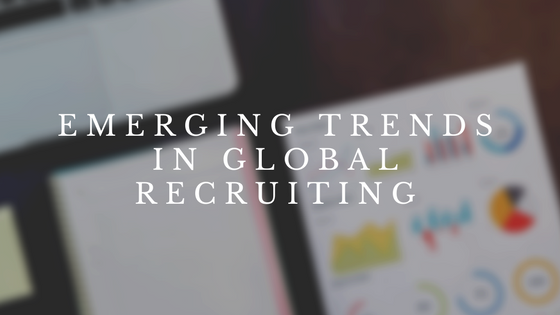Employing talented individuals has always been viewed as a highly transactional process. From searching for the right candidates, sifting through applicants, undergoing the interview process and, finally, choosing the individuals that best fit the open position.
Unfortunately, this procedure can easily stagnate after a while, causing the hiring process to become boring or, even worse, dreaded. However, LinkedIn’s 2018 Global Recruiting Trends report suggests that these hiring processes are slowly being revamped, placing a greater emphasis on the human in the interview seat, as well as the strategies required to get to know them better.
In order to glean better insight into the changes to come, let us take a closer look at the emerging trends in global recruiting.
Data is swiftly becoming a superpower
While recruiting has always been concerned with people, it has evolved to encompass numbers and statistics as well. Per LinkedIn’s research, most hiring managers and recruiters that utilize data now will likely depend on it even more within the next two years.
This development is due to the volume of data that is now available to professionals, as well as the speed at which it can all be analyzed. Therefore, it has become easier than ever to predict hiring outcomes and make decisions based on those numbers alone.
Diversity is now a global priority
In recent years, diversity has evolved from a box companies were required to check to a recognized, valuable asset. Due to this shift in mindset, inclusivity has become a priority, as leaders find themselves gleaning pertinent insight from employees of varying backgrounds and levels of experience.
Unfortunately, though, many companies have yet to crack the code of diversity. Often times, they will chalk this up to a lack of diversity within their communities, or claim they have been unable to discover diverse, yet qualified candidates to introduce to their organization.
Hopefully, as data analysis and interview processes improve, leaders will be better equipped to bridge the gaps between executives, employees, and the community. Until then, though, it is imperative individuals continue to foster diversity and warmth within their own places of employment. Perhaps this will aid some leaders in doing the same.
Artificial intelligence will continue to break into the field
Despite the fear surrounding artificial intelligence, it is important to note that it has proven itself to be an incredible asset to recruiters in the workplace. This technology shows its strength in screening and sourcing candidates, allowing recruiters to spend more time creating engaging, informative interview processes that enable them to hire the right individual on the first try. However, do not expect artificial intelligence to replace human recruiters at any point in the future, as interviewing, nurturing, and guiding employees are not exactly its strongest suit.
This year is bound to bring sweeping change to the talent acquisition industry. However, LinkedIn predicts these trends will garner overwhelmingly positive outcomes for those who can keep up and adapt accordingly. Regardless, it will be intriguing to see which of the previously mentioned changes truly come to pass and impact the industry.

